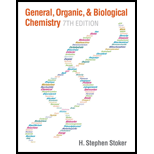
(a)
Interpretation:
The volume of water should be added to yield the given solution has to be determined.
Concept Introduction:
Dilution equation:
Dilution equation is given by,
(a)
Answer to Problem 8.68EP
The volume of water should be added to yield the given solution is 175 mL.
Explanation of Solution
Given information:
Volume of solution = 25.0 mL
Initial concentration = 1.00 M
Required concentration = 0.125 M
Final volume of solution = ?
Apply dilution equation to calculate the volume of water should be added to yield the given solution,
Now subtract the original volume (Vd) from the final volume (Vs)
Therefore, the volume of water should be added to yield the given solution is 175 mL.
(b)
Interpretation:
The volume of water should be added to yield the given solution has to be determined.
Concept Introduction:
Dilution equation:
Dilution equation is given by,
(b)
Answer to Problem 8.68EP
The volume of water should be added to yield the given solution is 395 mL.
Explanation of Solution
Given information:
Volume of solution = 5.00 mL
Initial concentration = 10.0 M
Required concentration = 0.125 M
Final volume of solution = ?
Apply dilution equation to calculate the volume of water should be added to yield the given solution,
Now subtract the original volume (Vd) from the final volume (Vs)
Therefore, the volume of water should be added to yield the given solution is 395 mL.
(c)
Interpretation:
The volume of water should be added to yield the given solution has to be determined.
Concept Introduction:
Dilution equation:
Dilution equation is given by,
(c)
Answer to Problem 8.68EP
The volume of water should be added to yield the given solution is 47500 mL.
Explanation of Solution
Given information:
Volume of solution = 2500 mL
Initial concentration = 2.50 M
Required concentration = 0.125 M
Final volume of solution = ?
Apply dilution equation to calculate the volume of water should be added to yield the given solution,
Now subtract the original volume (Vd) from the final volume (Vs)
Therefore, the volume of water should be added to yield the given solution is 47500 mL.
(d)
Interpretation:
The volume of water should be added to yield the given solution has to be determined.
Concept Introduction:
Dilution equation:
Dilution equation is given by,
(d)
Answer to Problem 8.68EP
The volume of water should be added to yield the given solution is 3.0 mL.
Explanation of Solution
Given information:
Volume of solution = 75.0 mL
Initial concentration = 0.130 M
Required concentration = 0.125 M
Final volume of solution = ?
Apply dilution equation to calculate the volume of water should be added to yield the given solution,
Now subtract the original volume (Vd) from the final volume (Vs)
Therefore, the volume of water should be added to yield the given solution is 3.0 mL.
Want to see more full solutions like this?
Chapter 8 Solutions
GENERAL,ORGANIC,+BIO.CHEM.-MINDTAP
- The quantum yield of the photochemical decay of HI is 2. Calculating the moles of HI per kJ of radiant energy can be decayed knowing that the energy absorbed per mole of photons is 490 kJ.arrow_forwardThe quantum yield of the photochemical decay of HI is 2. Calculate the number of Einsteins absorbed per mole knowing that the energy absorbed per mole of photons is 490 kJ.arrow_forwardThe quantum yield of the photochemical decay of HI is 2. How many moles of HI per kJ of radiant energy can be decayed knowing that the energy absorbed per mole of photons is 490 kJ.arrow_forward
- If the energy absorbed per mole of photons is 450 kJ, the number of Einsteins absorbed per 1 mole.arrow_forwardWhen propionic aldehyde in vapor form at 200 mmHg and 30°C is irradiated with radiation of wavelength 302 nm, the quantum yield with respect to the formation of CO is 0.54. If the intensity of the incident radiation is 1.5x10-3 W, find the rate of formation of CO.arrow_forwardDraw mechanismarrow_forward
- Does Avogadro's number have units?arrow_forwardExplain why the total E in an Einstein depends on the frequency or wavelength of the light.arrow_forwardIf the dissociation energy of one mole of O2 is 5.17 eV, determine the wavelength that must be used to dissociate it with electromagnetic radiation. Indicate how many Einstein's of this radiation are needed to dissociate 1 liter of O2 at 25°C and 1 atm of pressure.Data: 1 eV = 96485 kJ mol-1; R = 0.082 atm L K-1; c = 2.998x108 m s-1; h = 6.626x10-34 J s; NA = 6.022x 1023 mol-1arrow_forward
- Indicate the number of Einsteins that are equivalent to 550 kJ mol⁻¹ of absorbed energy (wavelength 475 nm).arrow_forwardIndicate the number of einsteins that are equivalent to 550 kJ mol⁻¹ of absorbed energy?arrow_forwardA unit used in photochemistry is the einstein. If 400 kJ mol-1 of energy has been absorbed, how many einsteins is this equivalent to?arrow_forward
 Introductory Chemistry: A FoundationChemistryISBN:9781337399425Author:Steven S. Zumdahl, Donald J. DeCostePublisher:Cengage Learning
Introductory Chemistry: A FoundationChemistryISBN:9781337399425Author:Steven S. Zumdahl, Donald J. DeCostePublisher:Cengage Learning Chemistry & Chemical ReactivityChemistryISBN:9781133949640Author:John C. Kotz, Paul M. Treichel, John Townsend, David TreichelPublisher:Cengage Learning
Chemistry & Chemical ReactivityChemistryISBN:9781133949640Author:John C. Kotz, Paul M. Treichel, John Townsend, David TreichelPublisher:Cengage Learning Chemistry for Engineering StudentsChemistryISBN:9781337398909Author:Lawrence S. Brown, Tom HolmePublisher:Cengage Learning
Chemistry for Engineering StudentsChemistryISBN:9781337398909Author:Lawrence S. Brown, Tom HolmePublisher:Cengage Learning Chemistry: The Molecular ScienceChemistryISBN:9781285199047Author:John W. Moore, Conrad L. StanitskiPublisher:Cengage Learning
Chemistry: The Molecular ScienceChemistryISBN:9781285199047Author:John W. Moore, Conrad L. StanitskiPublisher:Cengage Learning Chemistry: An Atoms First ApproachChemistryISBN:9781305079243Author:Steven S. Zumdahl, Susan A. ZumdahlPublisher:Cengage Learning
Chemistry: An Atoms First ApproachChemistryISBN:9781305079243Author:Steven S. Zumdahl, Susan A. ZumdahlPublisher:Cengage Learning Living By Chemistry: First Edition TextbookChemistryISBN:9781559539418Author:Angelica StacyPublisher:MAC HIGHER
Living By Chemistry: First Edition TextbookChemistryISBN:9781559539418Author:Angelica StacyPublisher:MAC HIGHER





